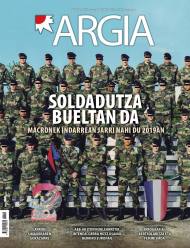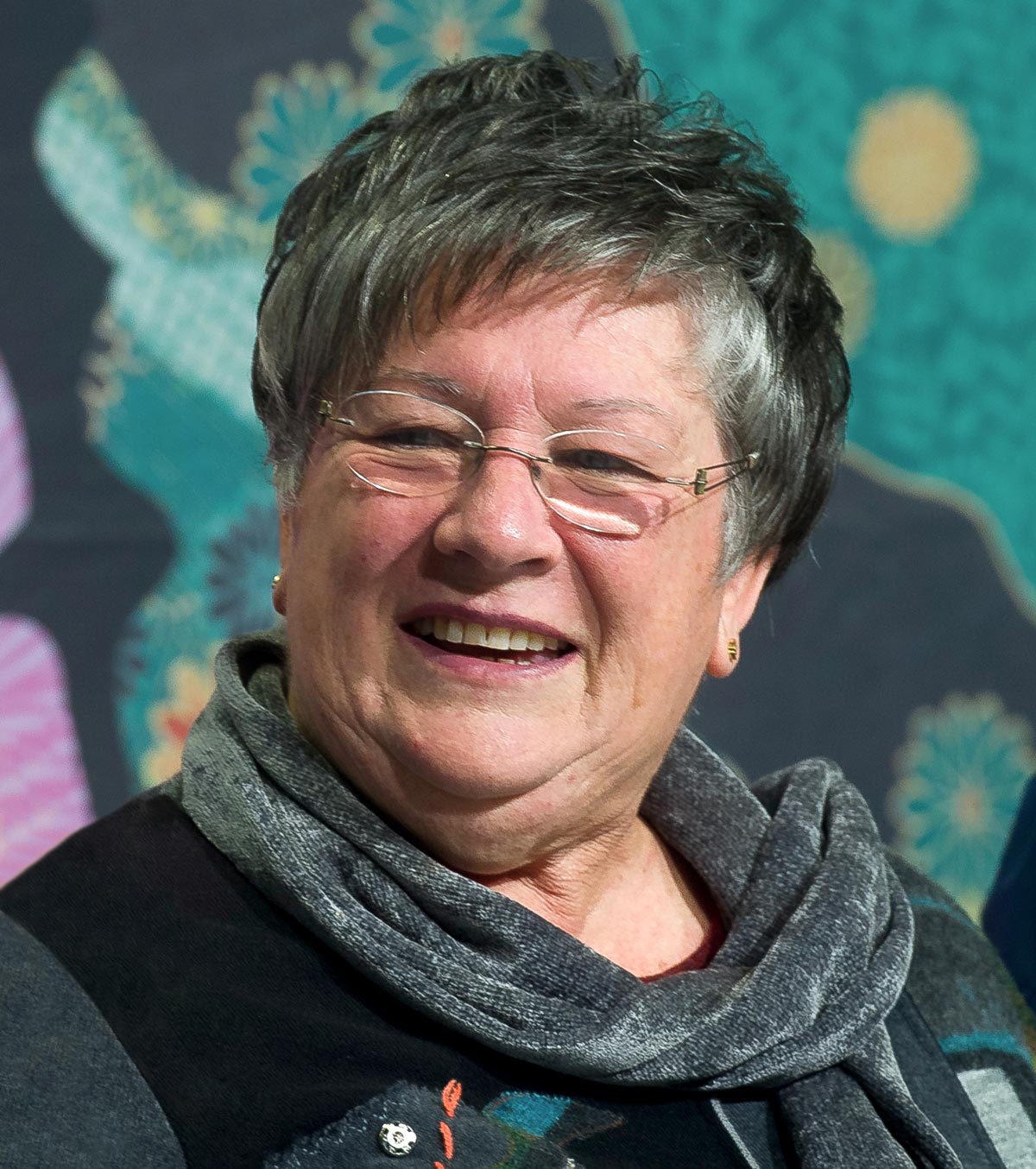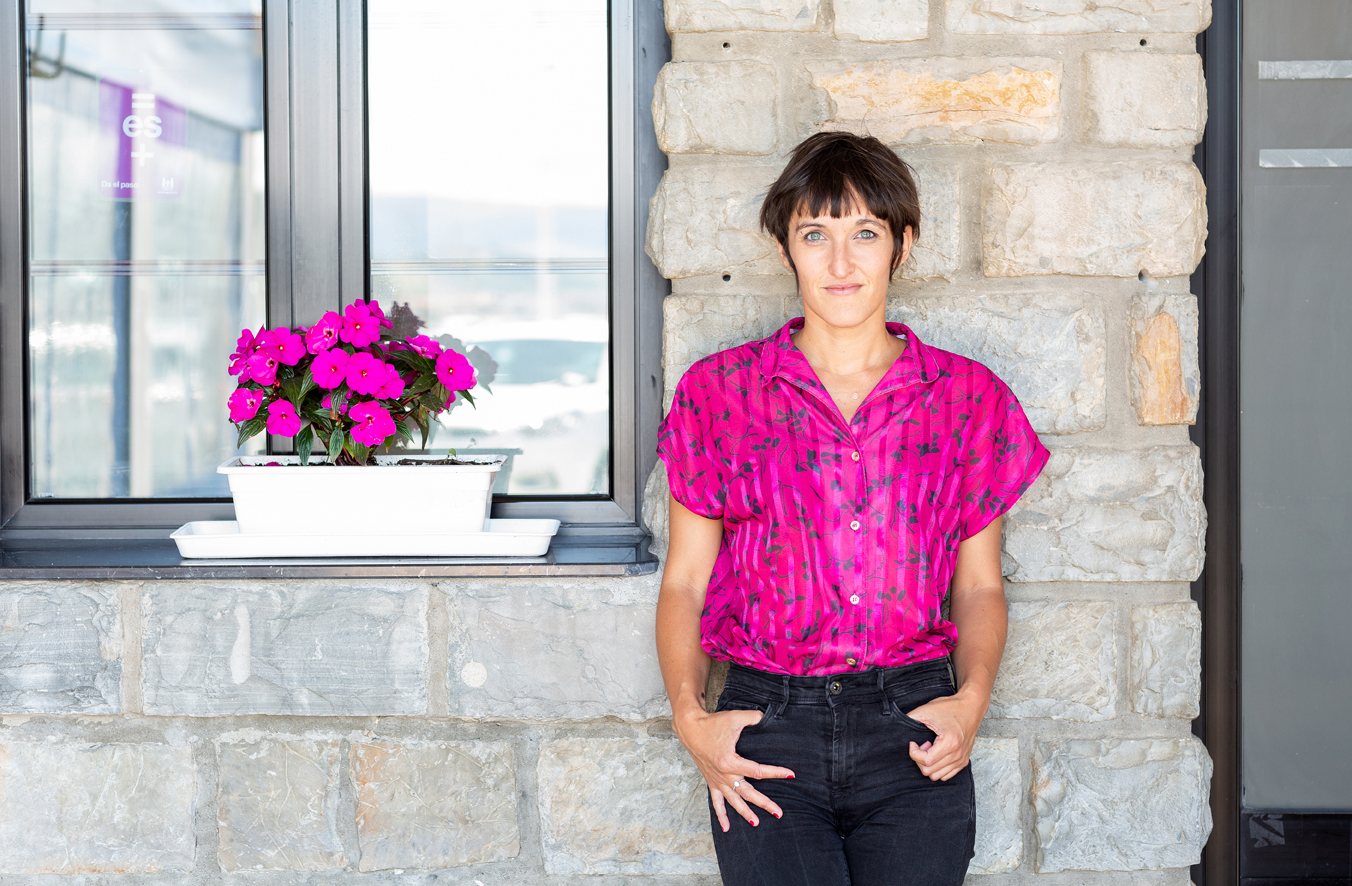The feminist genealogy of Bertsolarism, in an infographic
- Bertsolaris Ainhoa Agirreazaldegi, Uxue Alberdi, Miren Artetxe and Ane Labaka and representatives of the txakur collective Gorria Malen Amenabar and Mariñe Arbeo have created an infographic on the genealogy of contemporary Bertsolaris women. Mugarriz mugarri, they have shaped in an artistic way the evolution of the collective path, with the feeling that the young Bertsolaris start from scratch so as not to stumble upon the “lifelong stone”. (EUR 8 for sale at the ARGIA Fair and on the websites of Berria, Jakin and Lanku).

These four bertsolaris met around the proposal made by Uxue Alberdi to present the work. They began to comment on the experiences and references of each in Bertsolarism. This same hesitation highlights the need for this infographic, as explained by Artetxe: “When everyone started to cite the references, the names and the stems of their life, we didn’t know each other. Because Ane Labaka is younger, because I'm from Iparralde, because Uxue Alberdi came from the world of literature ... If in such a short time we don't share references between people so close to each other -- that also highlighted the need for a genealogy. All genealogy are built and we also begin to build ours.” These four bertsolaris, after completing the basic outline of their experiences and knowledge, felt the need to maximize exercise and sent a questionnaire to most of the women bertsolaris and bertsolaris. With more than 50 responses, the collection and contrast work was completed.
Berria, Jakin, Lanku and ARGIA have collaborated in the project. At the Durango Fair you can buy infographic for 6 euros in the posts of these and online on their websites for 8 euros (shipping costs included).
Infographic Measurements: 59.4 cm x 85.1 cm.
Harriz harri, the road traveled collectively
What we're going to see at the center of the infographic is a big network. Artetxe explains: “Among our experiences, one of the most important are the processes experienced in the community. We have searched for milestones that reflect these collective processes: date, person, concrete action.” Labaka states the following: “The choice has been to introduce as few personal references as possible.”
The infographic does not suggest linear or hierarchical readings. Each of these cramps is represented by a circle. They are stones, but not rigid or weighty, but transparent. The stones give a lot of play to the readings in this town, and Artetxe adds with humor: “Lujanbio at the farewell of the last championship justified us with a ‘record’.” Labaka points out the following detail: “We have also placed the bicycle there, with the adaptation of the well-known verse ‘He is going to fall, do not push him’, as a reflection of the messages that tell us that things are going to change for themselves. On the contrary, women appear by their side pushing the big stones.”
The milestones collected by the informatics are very varied: some are milestones linked to the plaza, others to the network, media, discourses, colonies... “Everything affects us and in everything we have acted collectively,” said Artetxe.
What to end the infographic? What to reflect today? That has been one of the major dilemmas they have had. “We wanted to represent diversity, the explosion. And it's nothing closed. It ends with three points, ‘towards new definitions...’”.

Reading that crosses bertsolarism and feminism
On the top left of the infographic, the first figure is a girl looking outward on the edge of the stage. As Artetxe explains, it represents the relationship between Bertsolarism and feminism: “The feminist movement was working in the 1970s and, even outside, it had its influence on Bertsolarism. Kristina Mardaras was considered a feminist.” The infographic depicts the trajectory that Bertsolarism and feminism have had in common life. Artetxe: “The gender system worked feminism in anthropology and was made from the gender reading academy of Bertsolarism. The lectures and reflections of Uxue Alberdi and Ainhoa Agirreazaldegi marked the theoretical framework for the world of bertso: for the first time the words ‘bertsolaritza’ and ‘feminism’ were spoken in unison, giving tools to see how the gender system and bertsolaritza unite, outside academia and without direct contact with the feminist movement. As a result, we have begun to look at what feminist practices are carried out in other areas to bring to the bertsos some of them: that is why feminist sessions emerged, the non-mixed spaces ... essential tools to work with gender. Sewing the network and sharing collective knowledge is what all this has meant. If we don't share experiences and knowledge, I see the risk of getting stuck with the same stone over and over again. This infographic is also a tool for this.”

Infographic also collective
Labaka underlined the importance of collaboration: “So far, we’ve shared with other studies or articles of oneself, but this has been something else, because it’s been made from zero together. Every week we have joined a group and on the way it has intensified. That path has given us a lot.”
The four bertsolaris carried out their emptying and, after completing the scheme through a survey with the knowledge of 50 other women, they went to the txakur Gorria collective to begin the design phase in collaboration with them. Mariñe Arbeo points out that the infographic has gained many details due to the incorporation of the design perspective in the center of the project: “Together we have made the way to move concepts into the image.” Artetxe takes a bump of humor: “These think differently. We had to reformulate our scheme, our scheme was very square. Thinking about collective and images has been a great challenge.” Labaka explains the exercise: “We had to learn how to leave it out. At first we wanted to put everything in, all the feminist verses of the world, all that was a milestone for each -- that's been the exercise, understanding that by just putting one thing, it means everything behind it."
Arbeo explains that they have chosen the collage: “We wanted to say through what images we represented the concept and looked for old photos. And with that create a collage.”
Invitation to the creation of multiple genealogy
Artetxe has pointed out that they have had "many dilemmas," since "all decisions are political." You're also feeling restless. As the whole story is a construction, this is also the case. This is a genealogy and an infographic, if there were another fifteen, phenomenon. It would be ideal if this exercise of collective memory were not carried out by us alone. Make eleven groups, and share them, make different readings. It is worth doing local things and in many ways, whether it be books, movies...”. Labaka rounded the interview with one more invitation: “That it also serves to drive research, that behind each of those milestones can be a lot of research topics. Everything we have collected so far we make it very happy for those who need it.”

Kristina Mardaras, beste gauza askoren artean, bertsolaria da. Euskal Herriko Bertsolari Txapelketa Nagusian parte hartu zuen lehen emakumea izan zelako da ezagun, bertso munduan. Baina, baita hamaika bertso-saiotako antolatzaile eta entzule gisa ere. Izan ere, plaza utzi zuen,... [+]























